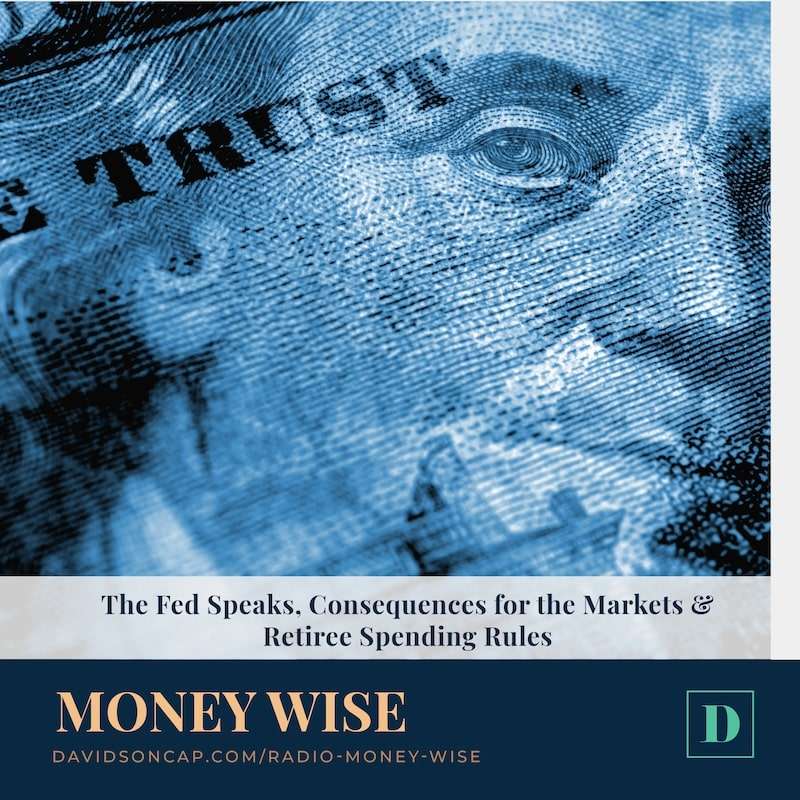A Good Retirement Plan Isn’t Just About a Savings Strategy
Much of the retirement advice you hear is focused on your savings strategy – and with good reason. If you want to live comfortably in retirement without the worry of outliving your nest egg, you must plan ahead to save what you’ll need. However, that’s only one piece of the puzzle. What happens once you’re in retirement? What does wealth management look like then? Are there retiree spending rules you should follow so that you can be sure your nest egg lasts a lifetime?
The answer is yes and following these rules can save you from falling into two unfortunate camps. First, there are retirees who are so afraid of running out of money that they barely spend anything and fail to fully enjoy their retirement. Second, there are retirees who spend more than they should and risk their future security. Your goal should be to find a balance between these two extremes so that you can enjoy your retirement without jeopardizing everything you worked for. The four retiree spending rules below will give you a roadmap to get there.
1. Establish a Spending Framework
A great way to know if you’ve saved enough for retirement is to use a simple calculation. Track your spending for an entire year, taking the time each month to write down every transaction you make. Note the specifics of where your money went, too. Identify how much you spent on your cell phone, electricity, water, entertainment, food – anything that you’ll still be paying for in retirement. At the end of the year, add up the total of your spending from each month, that’s the annual withdrawal amount you’ll need in order to maintain your current lifestyle. If you divide that annual number by 12, this is your monthly spending average.
Now, you’ll need to look more closely at that annual withdrawal amount to see if maintaining your current lifestyle is reasonable. If you would have to withdraw more than 6% of the value of your retirement nest egg, then you’re going to need to either work longer and save more or lower your expenses and change your lifestyle to live within your means.
2. Make a Plan to Pay Down Debt
This is a smart strategy for all stages of life, and it’s especially crucial to follow once you’re in retirement and your paychecks stop. If you go into retirement with significant debt, you might look at your large nest egg and feel the desire to be debt-free is overwhelming. However, spending it to pay off your debts without proper planning can be incredibly detrimental to your financial security. What’s more, if you’re taking money out of your IRA to pay off large debts, those withdrawals are fully taxable as ordinary income, so you’re ultimately being taxed to pay off your debt.
So, although it may seem like a good idea to eliminate bills in retirement, it requires proper planning. If you don’t want to be making mortgage payments in retirement, make a plan to pay off your house while you’re still employed. If you don’t want to be making car payments, don’t buy that fancy new car unless you’re able to pay it off before you retire.
What can you do instead of impulsively spending to pay off debts? Make a budget for yourself and give yourself deadlines for when you want to pay off certain things in a way that lets you do it without negatively impacting your bottom line.
3. Find the Right Annual Withdrawal Rate for You
There’s a popular rule of thumb when it comes to spending in retirement that is commonly referred to as the Four Percent Rule. Simply put, it says retirees should withdraw 4% of the total value of their investment portfolio on an annual basis. Due to the low-interest rate environment over the last 15 years, some professionals in the financial services industry have been recommending an annual withdrawal rate to be between 2%-3%. It’s important to be cautious of those who are advising such low withdrawal rates, however, as it provides them with the opportunity to keep the bar as low as possible so that they can charge higher fees and sell products that have loads of sales charges attached to them and still meet their 4% maximum rate of withdrawal target.
At Davidson Capital Management, we advise our clients to go by a 5%-6% withdrawal rate on an annual basis. We have found that they’ve been able to do this successfully without encroaching on the principle assets they’ve invested with us over the lifetime of their accounts. Ultimately, it comes down to determining what the right amount is for you depending on how large your nest egg is and how long you expect your retirement to last.
SEE ALSO: How to Manage Risk in Your Investment Portfolio
4. Create Your Own Annuity Without Owning an Annuity
When it comes to deciding when you should withdraw money from your investment accounts and how much to withdraw each time, it’s smart to create your own annuity within your portfolio. Here’s why: If you’re going to be living off your assets in retirement, set up a particular dollar amount that you’re going to be withdrawing on a monthly basis from your nest egg to live off in retirement. Taking out smaller amounts more frequently will protect your bottom line more than if you took out larger amounts less frequently because you’re able to better stay on top of how much you’re ultimately withdrawing from your accounts.
It can be incredibly difficult to keep track of how you’re spending large sums of money and the desire to overspend is a hard temptation to fight consistently throughout your lifetime. By giving yourself a monthly income, you give yourself more control over your budget and more guardrails on how you can and should be spending your money.
An additional reason taking smaller sums out is wiser is because of dollar-cost averaging. Typically, you save for retirement through dollar-cost averaging – for instance, if you’re contributing funds to a 401(k), then you’re dollar-cost averaging into the market by incrementally contributing the total amount you wish to contribute. Because you’re dollar-cost averaging into the market, it’s wise to dollar-cost average out of the market, as well. Otherwise, if you’re taking out large sums of money sporadically (this is also known as chunking) and you take a large amount out of your assets at the wrong time, it could end up costing you at the end of the year and over the lifetime of your nest egg when it comes down to your total performance return and growth of your assets.
SEE ALSO: Three Reasons to Stay in the Market – Even When It’s Volatile
You Worked Hard for Your Retirement Savings; Don’t Blow It
If you want to enjoy your retirement, it’s important to do the work now so that you can create a reality that matches your vision. Chances are, you worked extremely hard for the money in your savings. You deserve to be able to enjoy the fruits of your labor. However, if you’re not properly prepared for how to spend the money that you saved, you run an incredibly high risk of blowing your savings and inviting a lot of unnecessary stress into your retirement.
It comes down to having a solid plan in place for your spending, coupled with a smart actively managed investment strategy to help sustain you throughout the entirety of your retirement. No matter where you are on your retirement journey, we can help. At Davidson Capital Management, we provide you with skilled and transparent investment management. If you’d like to talk with one of our team members about retiree spending rules or how you can strengthen your investments and retirement savings, please contact us today.




